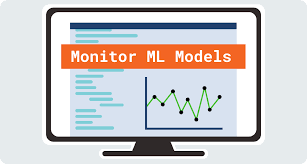comprehensive guide to ML Monitoring: Essential Metrics and Tools for Reliable Systems 2024

Machine learning (ML) systems are dynamic and complex, making continuous monitoring crucial to maintain performance and reliability. Effective monitoring not only tracks system health but also provides insights into potential failures and areas for optimization. From raw inputs to final predictions, every stage of the ML pipeline offers metrics that need careful observation.
This blog explores the key metrics for ML monitoring, the challenges involved, and the tools available to streamline the process.
What is ML Monitoring?
ML monitoring involves tracking, measuring, and logging metrics from machine learning systems in production. It ensures systems are functioning as expected, highlights potential failures, and provides visibility into how and why issues occur.
Key Objectives:
- Tracking: Record metrics for system health and performance.
- Alerting: Notify stakeholders when thresholds are breached.
- Debugging: Provide observability for root cause analysis.
Types of Metrics in ML Monitoring
Metrics for monitoring ML systems can be broadly categorized into operational and ML-specific metrics.
1. Operational Metrics
These metrics ensure the underlying infrastructure and software systems are functioning optimally. They include:
- Latency: Time taken for the model to generate predictions.
- Throughput: Number of predictions processed per second.
- CPU/GPU Utilization: Resource consumption.
- Error Rates: Percentage of failed requests.
2. ML-Specific Metrics
ML-specific metrics focus on the performance of the machine learning pipeline, tracking artifacts like:
- Model Accuracy-Related Metrics:
- Accuracy, precision, recall, and F1-score.
- Example: Monitoring click-through rate (CTR) and completion rate for a recommendation system.
- Prediction Monitoring:
- Track distribution shifts in prediction outputs as proxies for data shifts.
- Example: Unusual streaks of a single predicted label, like a model predicting “False” continuously.
- Feature Monitoring:
- Validate feature values against expected schemas.
- Example: Ensure feature ranges fall within acceptable limits.
- Raw Input Monitoring:
- Analyze incoming data before preprocessing to detect anomalies or format inconsistencies.
Challenges in ML Monitoring
- Data Complexity:
- Raw data often comes from multiple sources with varying formats and structures.
- Solution: Monitor raw inputs before they are processed to identify potential issues early.
- Feature Drift:
- Features can drift over time due to changes in the underlying data.
- Solution: Validate feature distributions and schema changes regularly.
- Alert Fatigue:
- Excessive alerts can desensitize teams, making them less responsive to critical issues.
- Solution: Set meaningful alert conditions and thresholds to minimize false positives.
- Scalability:
- Monitoring hundreds of models and thousands of features can strain resources.
- Solution: Abstract lower-level metrics into higher-level signals to reduce overhead.
Key Tools for ML Monitoring
1. Logs
- What They Do:
- Record events at runtime, such as errors, stack traces, and function calls.
- Challenges:
- Large log volumes can be overwhelming; querying logs is often time-consuming.
- Tools:
- Elastic Stack (ELK), Splunk, and Datadog for log management and analysis.
2. Dashboards
- What They Do:
- Visualize metrics over time to reveal trends and anomalies.
- Benefits:
- Make monitoring accessible to non-engineers (e.g., product managers).
- Provide real-time insights into system behavior.
- Tools:
- Grafana, Tableau, and Evidently AI for creating intuitive dashboards.
3. Alerts
- What They Do:
- Notify teams when predefined conditions are breached.
- Key Components:
- Policy: Defines alert conditions (e.g., accuracy < 85%).
- Notification Channels: Specifies recipients and communication methods (e.g., Slack, email).
- Actionable Details: Includes mitigation instructions or runbooks.
- Challenges:
- Prevent alert fatigue by tuning thresholds to minimize false positives.
- Tools:
- PagerDuty, Prometheus Alertmanager, and Opsgenie.
Best Practices for ML Monitoring
- Monitor the Entire Pipeline:
- Track metrics across data ingestion, preprocessing, feature engineering, and model predictions.
- Automate Feature Validation:
- Use libraries like Great Expectations or Deequ to ensure features follow expected schemas.
- Version Control:
- Version input schemas and features to track changes over time.
- Focus on Higher-Level Metrics:
- Abstract detailed metrics into signals aligned with business objectives.
- Use Real-Time Monitoring:
- Implement real-time systems to catch issues like data drift as they occur.
Future Trends in ML Monitoring
- AI-Driven Anomaly Detection:
- Leverage machine learning to identify anomalies in monitored metrics.
- Edge Monitoring:
- Focus on monitoring ML systems deployed on edge devices with limited connectivity.
- Integrated Platforms:
- Unified tools that combine monitoring, CI/CD, and retraining pipelines.
- Ethical Monitoring:
- Ensure fairness and transparency by tracking bias and other ethical concerns.
Conclusion
Effective ML monitoring combines operational and ML-specific metrics to provide complete visibility into model performance and system health. By leveraging robust tools and adhering to best practices, organizations can ensure their ML systems are reliable, scalable, and aligned with business objectives.
Ready to monitor your ML systems effectively? Start building your observability pipeline today!